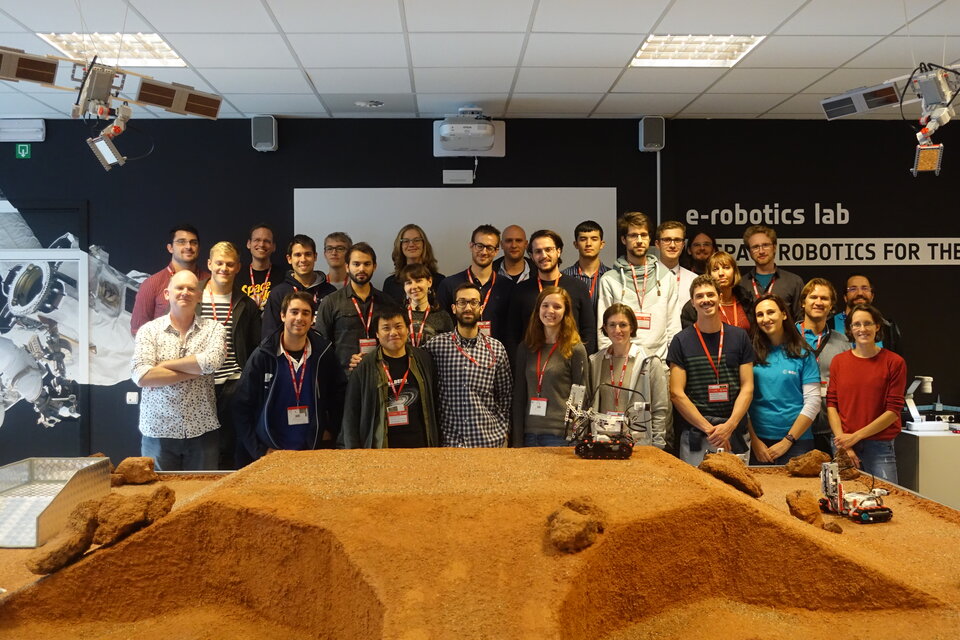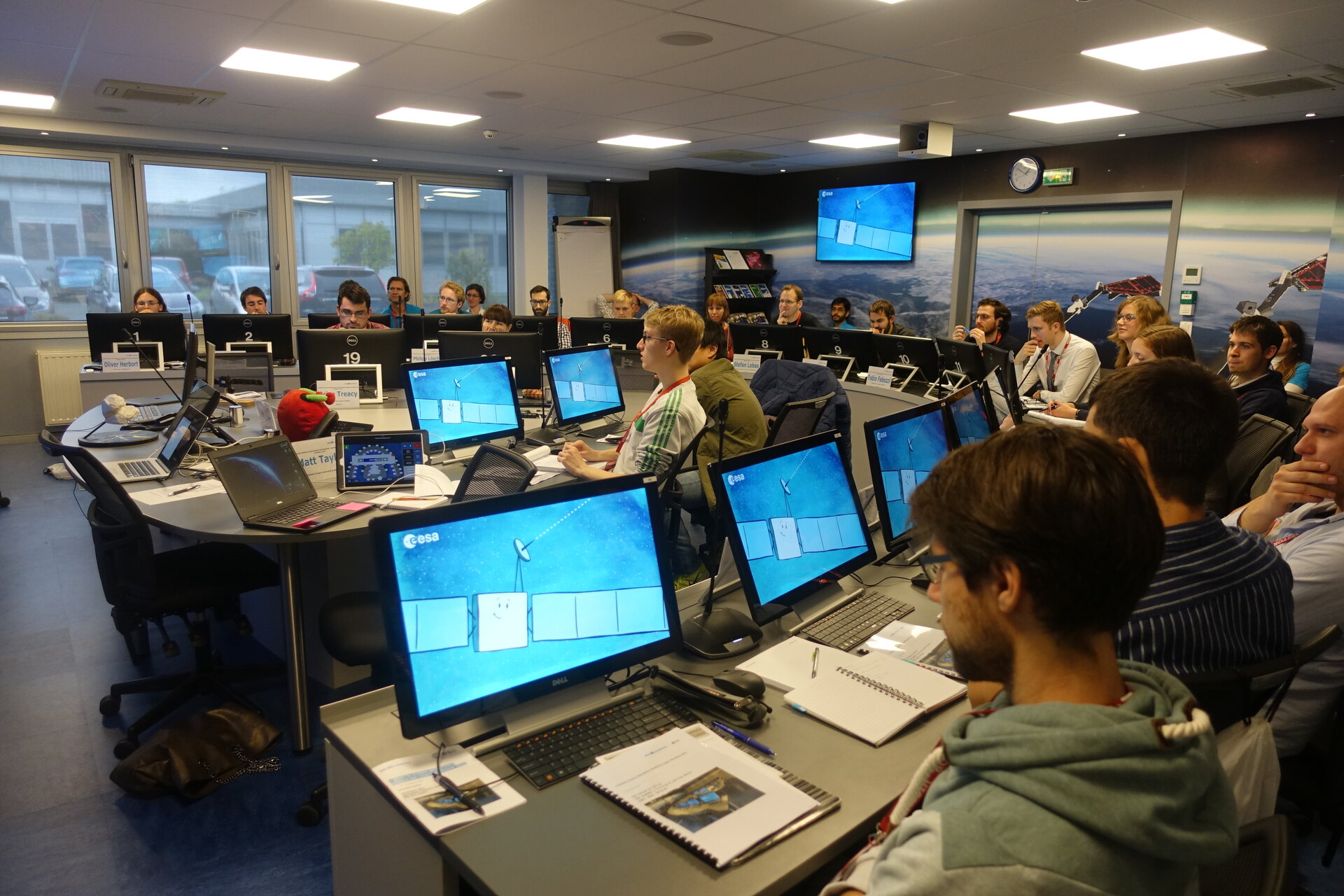Students learned about Rosetta’s science operations scheduling in new workshop
ESA’s Rosetta mission was a marvel of modern science, successfully orbiting a spacecraft around a comet, and even landing a probe on the surface. Although the operational phase of this mission has ended, this legacy lives on in many forms. One of these is the Rosetta Science Operations Scheduling Legacy Workshop.
22 university students from 9 different ESA Member and Associated States participated in this first-of-its-kind workshop. Running in early October 2017, it was hosted at ESA Academy’s Training and Learning Centre, part of ESEC: the European space Security and Education Centre, in Belgium. The workshop gave students the opportunity to learn about science operations scheduling, with the Rosetta mission as a real-life example. The workshop was organised in coordination with experts from the Rosetta Science Ground Segment from the European Space Astronomy Centre (ESAC) where the Rosetta science operations where scheduled for the entire Rosetta mission. In preparation of the workshop, a pilot version was held at ESAC with local trainees in order to evaluate the complexity of the group exercises, the time needed to discuss the answers and to provide feedback on how issues were solved in the real mission.
For the full workshop at ESEC, students were tutored by seven experts, scientists and engineers from ESA and the Max Planck Institute for Solar System Research, who had been involved in the Rosetta mission. Among them were the Rosetta project scientist and spacecraft operations manager. These experts presented a series of lectures and set group exercises using ESA’s Mapping and Planning of Payload Science (MAPPS) software. Split into small teams and supported by experts who scheduled the Rosetta mission operations, various scenarios were then proposed, such as Rosetta’s arrival at the comet or search for the Philae lander after its landing. Students then used the planning software to solve these types of challenges.

The exercises were reinforced by a series of lectures from the project experts. They gave overviews of the Rosetta mission, as well as focussing down on specific aspects such as spacecraft design, the planning of science and mission operations, and the Philae lander. Throughout the workshop each team presented the results of the exercises and discuss them with the other students and experts allowing all students to be evaluated so that they could claim ECTS credit(s) from their respective universities. The students also enjoyed a guided tour of ESEC and the PROBA control and operations rooms.
Rosetta was an ambitious mission, with many unique challenges to be solved for success. Even so, Rosetta is one of many ESA missions that are in operation or being developed. Each of these have their own specific problems to be solved. Using challenges taken from the past helps ESA secure solution for the future.
- For more information about upcoming ESA Academy training sessions, please visit: http://www.esa.int/Education/ESA_Academy/Current_opportunities
- To contact ESA Academy, please e-mail: esa.academy@esa.int


